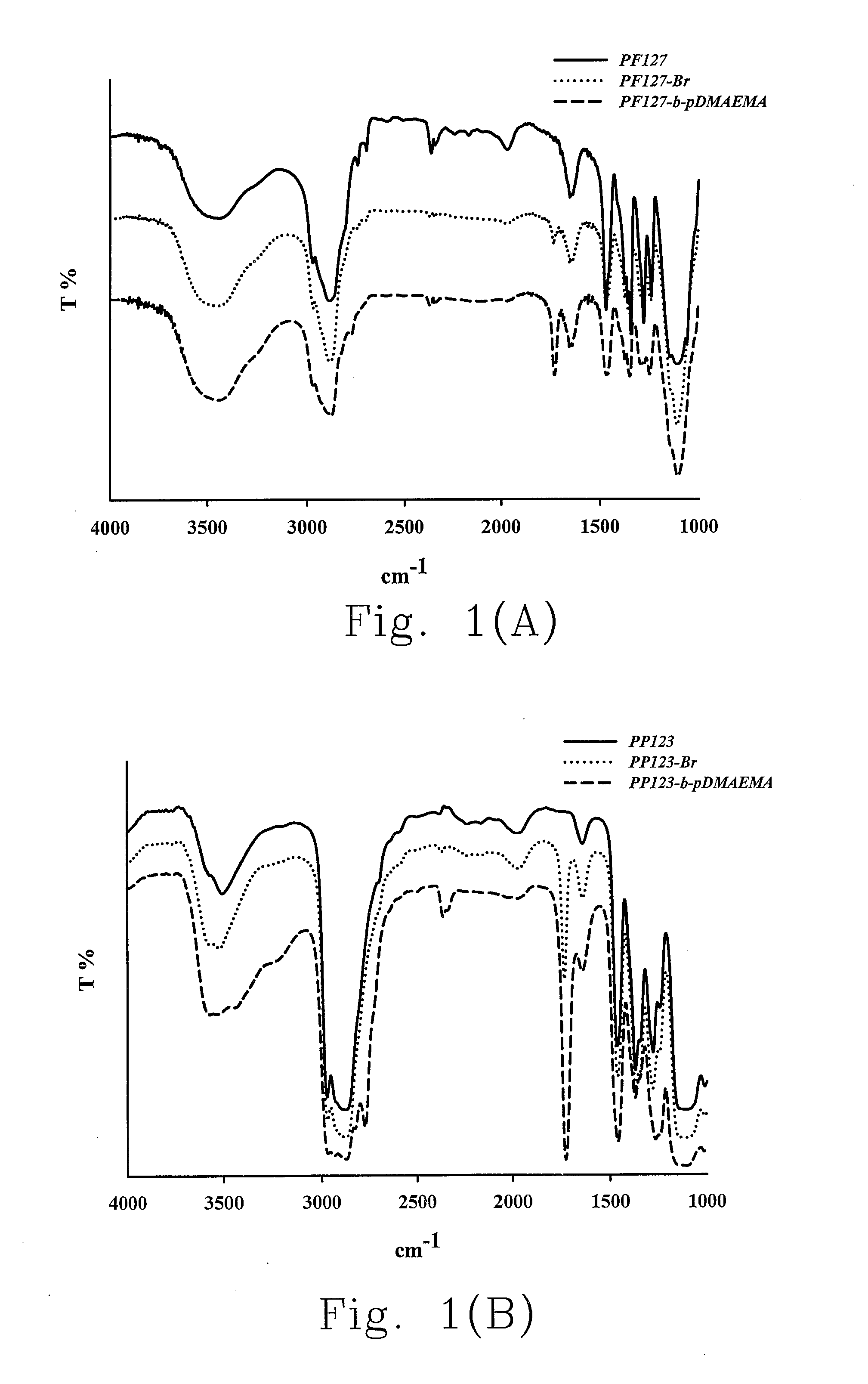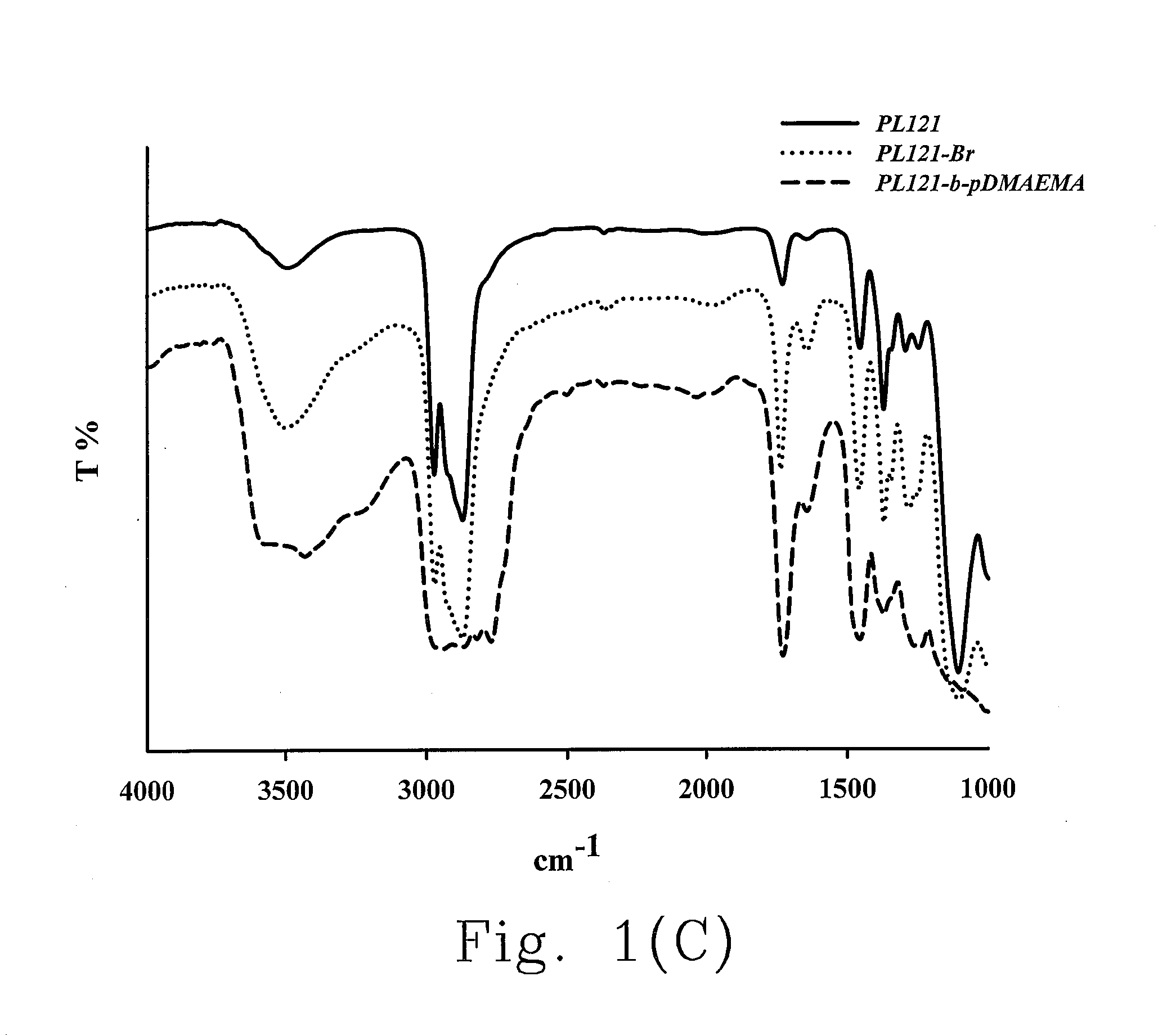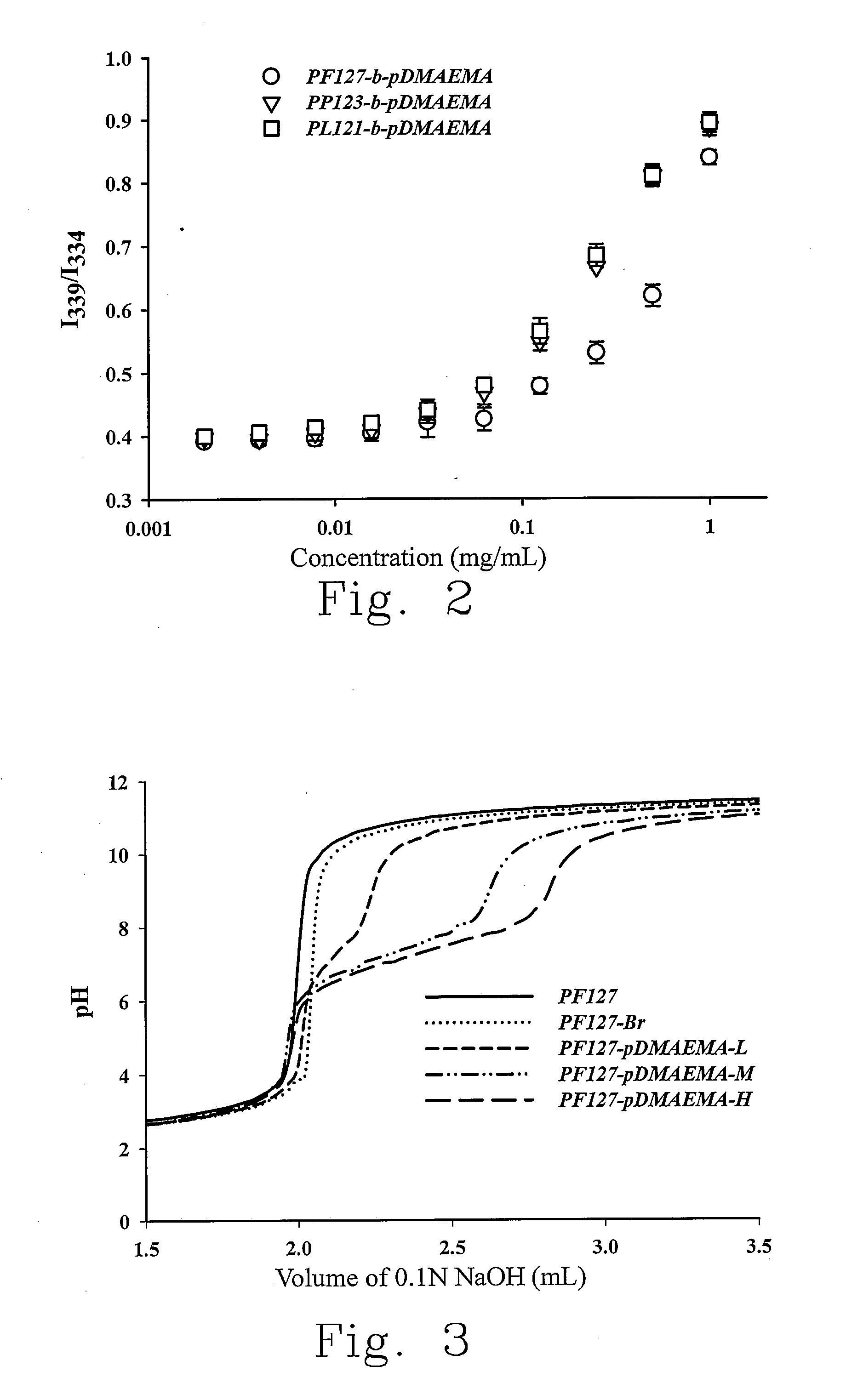Functionalized polymer nanoparticles and the pharmaceutical use thereof
a polymer nanoparticle and functional technology, applied in the field of polymer nanoparticles, can solve the problems of limiting the development of this block copolymer, the cytotoxicity of most cationic polymers, etc., and achieve the effects of increasing the stability of the micelle carrier, increasing the hydrophobicity, and increasing the transfection efficiency
- Summary
- Abstract
- Description
- Claims
- Application Information
AI Technical Summary
Benefits of technology
Problems solved by technology
Method used
Image
Examples
examples
[0040]The following non-limiting examples are provided to illustrate particular embodiments. The embodiments throughout may be supplemented with one or more detail from one or more example below, and / or one or more element from an embodiment may be substituted with one or more detail from one or more example below.
[0041]Pluronic® PL121, PP123 and PF127 serve as the main skeleton of the block copolymer of the present invention and are used to polymerize with a cationic monomer. Among three Pluronic® derivatives, PF127 has the highest molecular weight, and the lengths of the PPO hydrophobic blocks of three Pluronic® derivatives are close while those of the PEO hydrophilic blocks vary. As shown in Table 1, the hydrophile-lipophile balance number (HLB) demonstrates various hydrophilic / lipophilic ratios.
TABLE 1MolecularweightPluronicPPOPEOHLB(Mw)PL121681014400PP123704085800PF127652002212600
[0042]Pluronic® PL121, PP123 and PF127 are modified with a bromo group at their respective hydroxyl...
embodiment 1
PF127-p(DMAEMA) Synthesis
[0178]Preparation of the Bromo Modifier of Pluronic® F127
[0179]12.6 g (1 mmol) Pluronic® F127 (PF127, Mw=12600 g / mol) is placed in a double-necked flask to degas under vacuum for 30 min, and 20 mL dichloromethane is filled in under argon. While the reactants are completely dissolved, 0.7 mL (5 mmol) triethylamine is added into the solution under ice bath. After stirring for about 15 min, 0.6 mL (5 mmol) 2-bromoisobutyryl bromide is then added into the solution. The reaction is carried out for 48 hrs at room temperature.
[0180]The reaction product is rinsed with large amount of hexane to remove the un-reacted 2-bromoisobutyryl bromide and incubated in a 4° C. refrigerator. The supernatant is poured out; a precipitate is obtained by repeated washing the product with hexane, and the precipitate is then extracted with 0.4 M HCl solution for many times to remove the salts produced in the reaction process. Finally, the purified bromo modifier of Pluronic® F127 (PF1...
embodiment 2
PL121-p(DMAEMA) Synthesis
[0184]Preparation of the Bromo Modifier of Pluronic® L121
[0185]4.40 g (1 mmol) Pluronic® L121 (PF121, Mw=4400 g / mol) dissolved in 20 mL dichloromethane is placed in a double-necked flask and degassed for 30 min and filled in an argon atmosphere. While the reactants are completely dissolved, 0.7 mL (5 mmol) triethylamine is added into the solution under ice bath. After stirring for about 15 min, 0.6 mL (5 mmol) 2-bromoisobutyryl bromide is then added into the solution and the reaction is carried out for 48 hrs at room temperature.
[0186]The reaction product is rinsed with large amount of hexane to remove the un-reacted 2-bromoisobutyryl bromide and incubated in a 4° C. refrigerator. The supernatant is poured out; the precipitate is obtained by repeated washing the product with hexane, and the precipitate is then extracted with 0.4 M HCl solution several times to remove the salts produced in the reaction process. Finally, the purified bromo modifier of Pluronic...
PUM
| Property | Measurement | Unit |
|---|---|---|
| Pharmaceutically acceptable | aaaaa | aaaaa |
Abstract
Description
Claims
Application Information
 Login to View More
Login to View More - R&D
- Intellectual Property
- Life Sciences
- Materials
- Tech Scout
- Unparalleled Data Quality
- Higher Quality Content
- 60% Fewer Hallucinations
Browse by: Latest US Patents, China's latest patents, Technical Efficacy Thesaurus, Application Domain, Technology Topic, Popular Technical Reports.
© 2025 PatSnap. All rights reserved.Legal|Privacy policy|Modern Slavery Act Transparency Statement|Sitemap|About US| Contact US: help@patsnap.com



